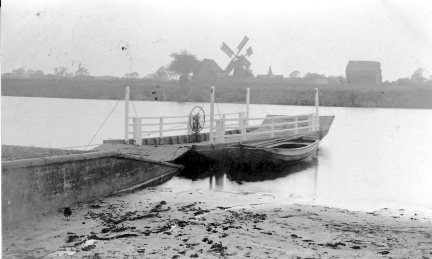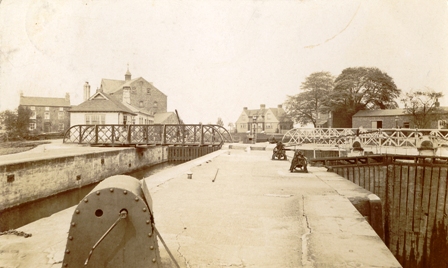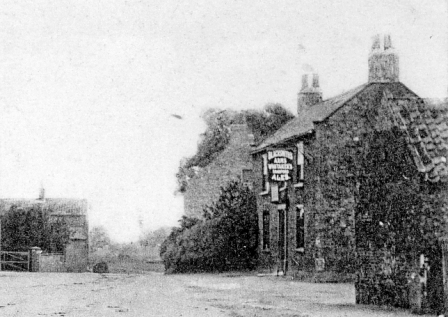The Manor & Estates
Before the Norman Conquest, Naburn was held by two Saxons, named Turgot and Turchil. After the Conquest it was given to Robert de Todeni, one of the Conqueror’s standard-bearers.
In 1086 there were two main estates recorded at Naburn; the larger belonging to Robert de Todeni and the other to the King. The larger estate passed, by marriage, to the Aubignys and then passed, in 1284-5, to Robert de Ros. About 1200 the Watervills were lords of the manor of Naburn under the Aubignys. Richard de Watervill assigned the manor to William Palmes in 1226 and the estate remained in the Palmes Family until the death of Commander George Bryan Palmes in 1974.
The manor house of the Palmes family (Naburn Hall) is recorded in 1345. It had eight hearths in 1672. A drawing of c. 1720 shows it as a two-storeyed house, three bays long, with attic windows in tall pointed gables. The house was rebuilt in 1735, much altered in 1818 and restored and enlarged in 1870. It has recently been extensively renovated and refurbished by its present owners.
The Importance of the River
There may have been a ferry across the Ouse at Naburn from early times and 'ferryman' occurs as a personal name there, for example in 1500. In 1739 a ferry was situated just to the west of Naburn Hall, but by the early 19th century it was in competition with a horse and foot road that led from the village street, past the hall and across the ings to a ferry close to Acaster Malbis. The latter ferry is said to have been started by the Thompsons of Escrick after Beilby Thompson married Dame Sarah Dawes and was intended to provide a connection with her estate at Acaster. Due to increased traffic, it proved a nuisance to the Palmes family at Naburn Hall and in 1824 they closed the road with the ferry moving to a point near the middle of the village, where the slipway remains today. The new ferry, for passengers and vehicles, was later worked by wheel and chain and was finally closed in 1956.
A weir was made at Naburn, a mile downstream from the village, in 1741 and a 'dam' or weir and a lock were opened in 1757. As a result this created an island on which a water-mill was later built. A second, larger, lock was constructed beside the old one in 1888 and opened by Prince Albert Victor.
The Railway
The York to Selby railway line crossed the River Ouse just north of the village by way of a swing bridge built in 1871. Naburn station was closed to passengers in 1953 and to goods in 1964, and in 1983 the Selby Diversion was opened and the line via Naburn was closed and turned into a shared leisure route for pedestrians and cyclists (Sustrans, Route 65).
Other Significant Buildings
The Yorkshire Ouse Sailing Club (YOSC), begun in 1938, has a club house near the former ferry, and at the north end of the village a marina was opened in 1970.
The Designer Outlet stands today on the site of the old Naburn Hospital, a psychiatric & maternity hospital, formerly known as York City Asylum, which closed in 1988.
There were three alehouses in Naburn in the mid 18th century, but by 1822 only the "Horse Shoe" remained. By 1872 it had acquired its current name of “The Blacksmiths' Arms".
The Organist Wore Short Trousers
Eddie Bell has kindly shared excerpts from the 1916 diary of his father, Philip Bell. The teenaged son of a signalman who worked on the old Naburn swing bridge, Philip was a budding organist and these excerpts offer a fascinating glimpse into village life during the early days of WW1. Just click here to open the diary PDF.
Adapted from: 'Naburn', A History of the County of York East Riding: Volume 3: Ouse and Derwent wapentake, and part of Harthill wapentake (1976), pp. 74-82. URL: http://www.british-history.ac.uk/report.aspx?compid=23009








